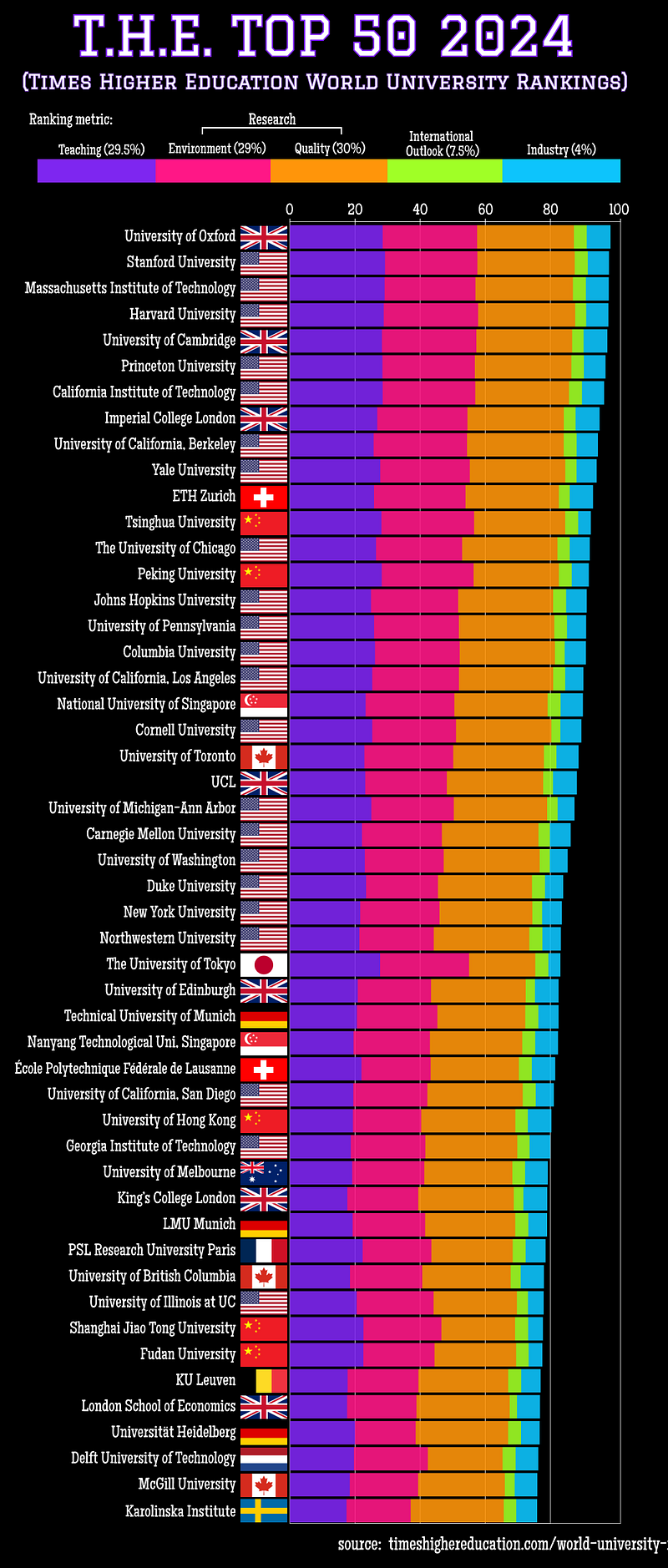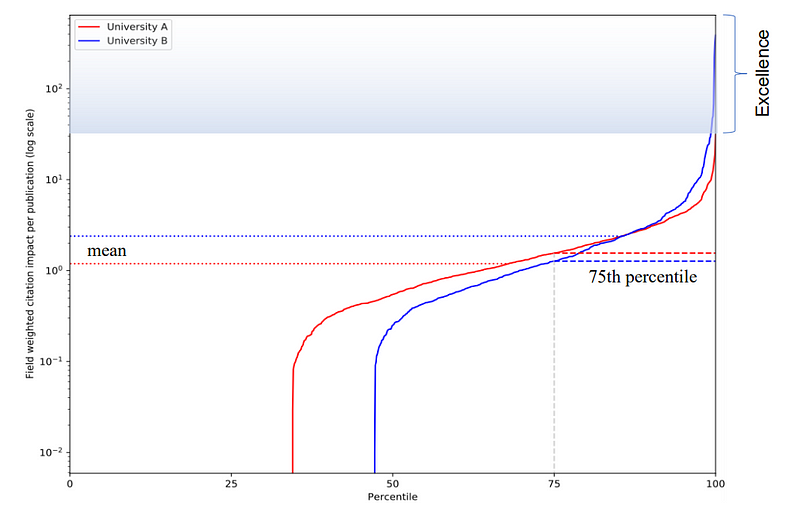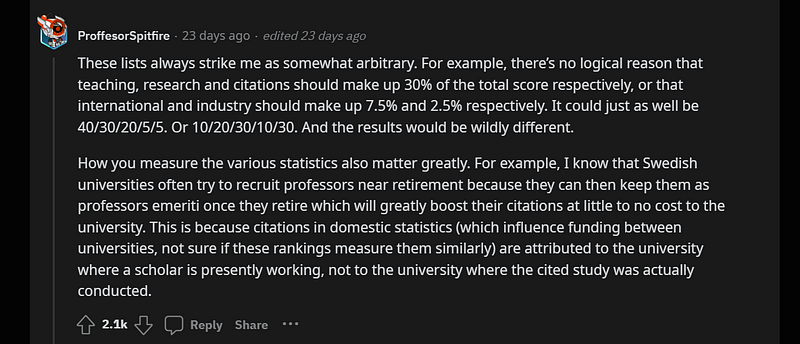The Times Higher Education University Rankings 2024: A Shift in Focus
Written on
Chapter 1: Overview of the 2024 Rankings
On September 27, 2023, the Times Higher Education (THE) World University Rankings for 2024 were released. I consider the THE Rankings to be among the most thorough of the major university ranking systems, as they incorporate a wider variety of relevant metrics compared to QS or ARWU. I will delve deeper into the ranking methodology later, but first, let’s examine the chart showcasing the top 50 ranked universities.

Significant Changes in Rankings
Among the top five institutions, Stanford and MIT have moved up one and two positions, respectively, since the 2023 rankings, while Cambridge and Harvard have fallen by one and two spots. Oxford continues to hold the top position. Notably, there has been a remarkable rise in the rankings of leading Asian universities, especially from China.
Now, eight Asian institutions are featured in the top 50, many of which have seen significant improvements since last year:
- #12. Tsinghua University (China) (previously #16 in 2023)
- #14. Peking University (China) (previously #17 in 2023)
- #19. National University of Singapore (unchanged)
- #29. University of Tokyo (Japan) (previously #39 in 2023)
- #32. Nanyang Technological University, Singapore (previously #36 in 2023)
- #35. University of Hong Kong (China) (previously #45 in 2023)
- #43. Shanghai Jiao Tong University (China) (previously #52 in 2023)
- #44. Fudan University (China) (previously #53 in 2023)
These advancements are largely attributed to a methodology update that revised how research metrics are computed, addressing some biases identified in my prior analysis of the 2023 rankings. It's encouraging to see increased acknowledgment for these leading Asian universities.
Ranking Improvements in European Universities
Several European institutions have also seen notable increases:
- #33. École Polytechnique Fédérale de Lausanne (Switzerland) (previously #41 in 2023)
- #48. Delft University of Technology (Netherlands) (previously #70 in 2023)
However, Indian universities remain absent from the upper echelons, with the top-ranked Indian institution (Indian Institute of Science, Bengaluru) now positioned between 201–250. Rankings outside the top 200 are provided in clusters to recognize the inherent imprecision and volatility of the metrics.
Chapter 2: Methodology Enhancements
The primary modification in the rankings pertains to the Research metrics. Previously, Research was divided into two components: Research (30%) and Citations (30%). Now, the Citations component has been rebranded as Research Quality, with its calculation updated. While it still counts citations in academic literature, this metric is now adjusted based on the "quality" of those citations.
The earlier Citations metric still constitutes 15% of the total, but three new adjusted metrics have been introduced, each contributing 5%:
- A PageRank-style algorithm weights citations, giving more importance to citations in widely cited articles (known as “Research Influence”).
- The number of papers within the top 10% of the most cited in each field (termed “Research Excellence”).
- The 75th percentile citation impact of a university's publications (referred to as “Research Strength”).

This PageRank-style weighting is a sensible enhancement, in my opinion. However, it’s noteworthy that two of the three new metrics still rely on the same Field Weighted Citations Metric used previously, merely adjusting the consideration from the arithmetic mean to both the 75th percentile and the count within the top 10%.
Overall, the newly defined Research Quality metric appears to offer an improvement over the former Citations metric. Previously, the top-ranking institutions based on the Citations metric included:
- Arak University of Medical Sciences (Iran)
- Cankaya University (Turkey)
- Duy Tan University (Vietnam)
Now, the leading institutions on the Research Quality metric are:
- MIT
- Stanford University
- Harvard University
Changes to Industry Metrics
The formerly named Industry Income metric (2.5%) has been expanded to encompass a Patents metric, increasing its overall weight to 4%. This metric accounts for the number of patents that reference research conducted by each university. It also appears to be a logical enhancement that recognizes technological innovation, subject to weighting by discipline and scaled for institutional size.
Conclusion on Methodology
Here is a Sankey chart from the THE website that illustrates the various inputs contributing to the 2024 Rankings.

Feedback and Opinions
Ranking universities is inherently challenging. There is likely a positive feedback loop at play—universities with strong reputations attract better students and faculty, which in turn enhances their reputation. However, if these students and faculty were dissatisfied with the quality of education and research, they would likely depart or share their experiences.
I commend the Times Higher Education Centre for striving towards a fair and objective ranking system, though I recognize that opinions may vary. Below is the most highly upvoted comment from my Reddit post featuring my 2023 visualization of the THE Rankings.

Feel free to share your thoughts in the comments below.
Chapter 3: Insightful Video Presentations
In this section, we present two informative videos that delve deeper into the 2024 university rankings and their methodologies.
The first video titled "The World University Rankings 2024 – Presentation of the Methodology" provides a comprehensive overview of how the rankings are determined and the changes made for this year.
The second video, "The 2024 US News College Rankings Have Been Released!" discusses the latest updates in college rankings, adding context to the global landscape of higher education.